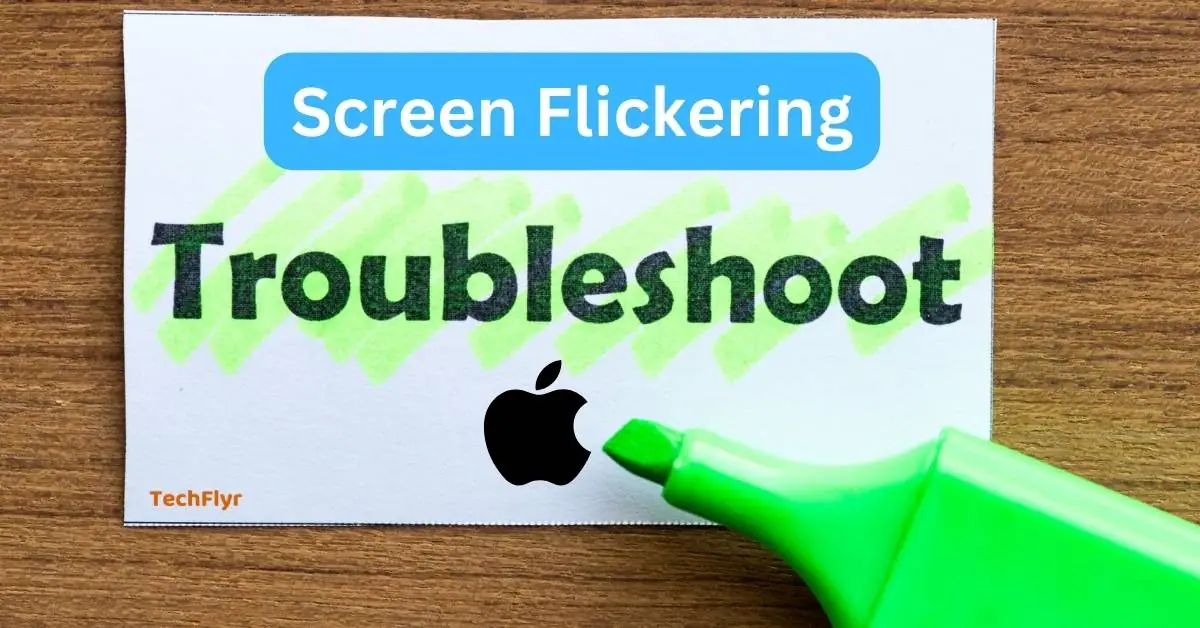For many Mac users, the convenience of plugging into an HDMI cable often leads to more headaches than solutions. The dreaded flickering screen when connecting your Mac to an external display through an HDMI port can be a maddeningly elusive problem. Whether you’re using your Mac for work, creative projects, or simply binge-watching your favorite show, the last thing you want to deal with is a display disruption. In this comprehensive guide, we’ll walk you through the steps to troubleshoot this common issue, ensuring that your second-screen experience is as smooth as possible.
Understanding the Problem
Before we jump into solutions, it’s important to understand what can cause your Mac display to flicker when connected to an HDMI display. The issue can stem from various factors, including cable quality, compatibility issues, or even issues with your Mac’s hardware.
Causes of Flickering
- Cable Quality: Poor quality or defective HDMI cables may not be able to handle the high resolution and refresh rate of your monitor, leading to flickering.
- Compatibility Issues: Certain display or Mac models may have compatibility issues with specific HDMI standards that can cause flickering.
- Overloaded Graphics Card: High-resolution displays can put a strain on your Mac’s graphics processing unit (GPU), leading to flickering if it’s overworked.
- Software Glitches: Sometimes, updated software can introduce bugs that affect the HDMI connection.
Commonly Affected Mac Models
- MacBook Pro
- MacBook Air
- Mac mini
- iMac
Troubleshooting Steps
If you’re experiencing screen flickering on your external display, it’s time to get your hands dirty with troubleshooting. Here are some essential steps to address the issue.
1. Check Your Cable Connections
Begin by ensuring that your HDMI cable is firmly connected to both the external display and your Mac. Try unplugging and re-plugging the cable a couple of times to clear any dust or debris that might be interfering with the connection.
2. Update Graphics Drivers
Outdated graphics drivers can cause numerous display-related issues, including flickering. Check for updates through the System Preferences app, or download the latest GPU drivers from the manufacturer’s website.
3. Adjust Display Settings
Navigate to the Display settings in System Preferences and try lowering the resolution and refresh rate of the external display to see if the flickering ceases. This can relieve the strain on the GPU if it’s being overworked.
4. Test On Different Devices
To identify whether the problem lies with your Mac or the HDMI device, try connecting the HDMI cable to a different computer or use a different HDMI cable with your Mac.
Advanced Solutions
If the basic troubleshooting steps don’t resolve the issue, it’s time to resort to more advanced solutions.
1. Resetting NVRAM and SMC
Resetting the non-volatile random-access memory (NVRAM) and system management controller (SMC) can often fix issues with external displays. Restart your Mac and immediately hold down Option, Command, P, and R keys until you hear the startup chime sound twice, then release.
2. Seeking Professional Help
If all else fails, it’s a good idea to seek the expertise of a professional. Apple’s Genius Bar can diagnose and fix issues with your Mac hardware, ensuring that no underlying component is at fault.
Preventive Measures
Once you’ve addressed the flickering screen issue, it’s essential to take some preventive measures to avoid future problems.
1. Using Certified Cables
Always use HDMI cables that are certified for the standards you need (high-speed for 1080p or 4k content). Using certified cables can eliminate many quality and compatibility issues.
2. Keeping Software Updated
Regularly check for updates for your Mac’s operating system and any connected devices, especially when you first notice the issue. Software updates often include fixes for known issues, including HDMI flickering.
Conclusion
Experiencing screen flickering when connecting your Mac to an HDMI display can be a frustrating issue, but it’s not insurmountable. By following the steps outlined in this guide, you’ll be well-positioned to troubleshoot and resolve the problem. Always remember that while DIY solutions are great, there’s no shame in reaching out for professional help if the issue persists. Additionally, being proactive by ensuring your hardware and peripherals are up to standard can save you from facing similar issues in the future. As technology continues to evolve, so do the potential challenges that come with it. By staying informed and taking the necessary steps, you can enjoy a reliable and flicker-free external screen experience with your Mac.

FAQ of Mac Screen Flickering
-
Why does my monitor flicker with an HDMI cable?
A: Possible causes include:
1. Loose HDMI cable connections.
2. Faulty or low-quality HDMI cable.
3. Mismatched refresh rates between the monitor and your computer. -
How do I fix my Macbook screen from flickering?
A: Try these steps:
1. Update your macOS and apps.
2. Ensure your Macbook isn’t overheating.
3. If the issue persists, contact Apple support as it could indicate a hardware problem. -
Why is my Mac not working with HDMI?
A: Check these things:
1. Ensure correct cable connections and power to both the Mac and monitor.
2. Use the correct input source on your monitor.
3. Verify your HDMI adapter (if needed) is compatible with your Mac.
4. Try resetting your Mac’s NVRAM or PRAM. -
Why is my external monitor flickering?
A: Here’s what to check:
1. Update your graphics drivers (especially on Windows).
2. Match the monitor’s refresh rate to your computer’s output.
3. Connect the monitor to a different computer to test if the problem is with the monitor itself.

2 thoughts on “Troubleshooting Mac Screen Flickering when Connected to HDMI”